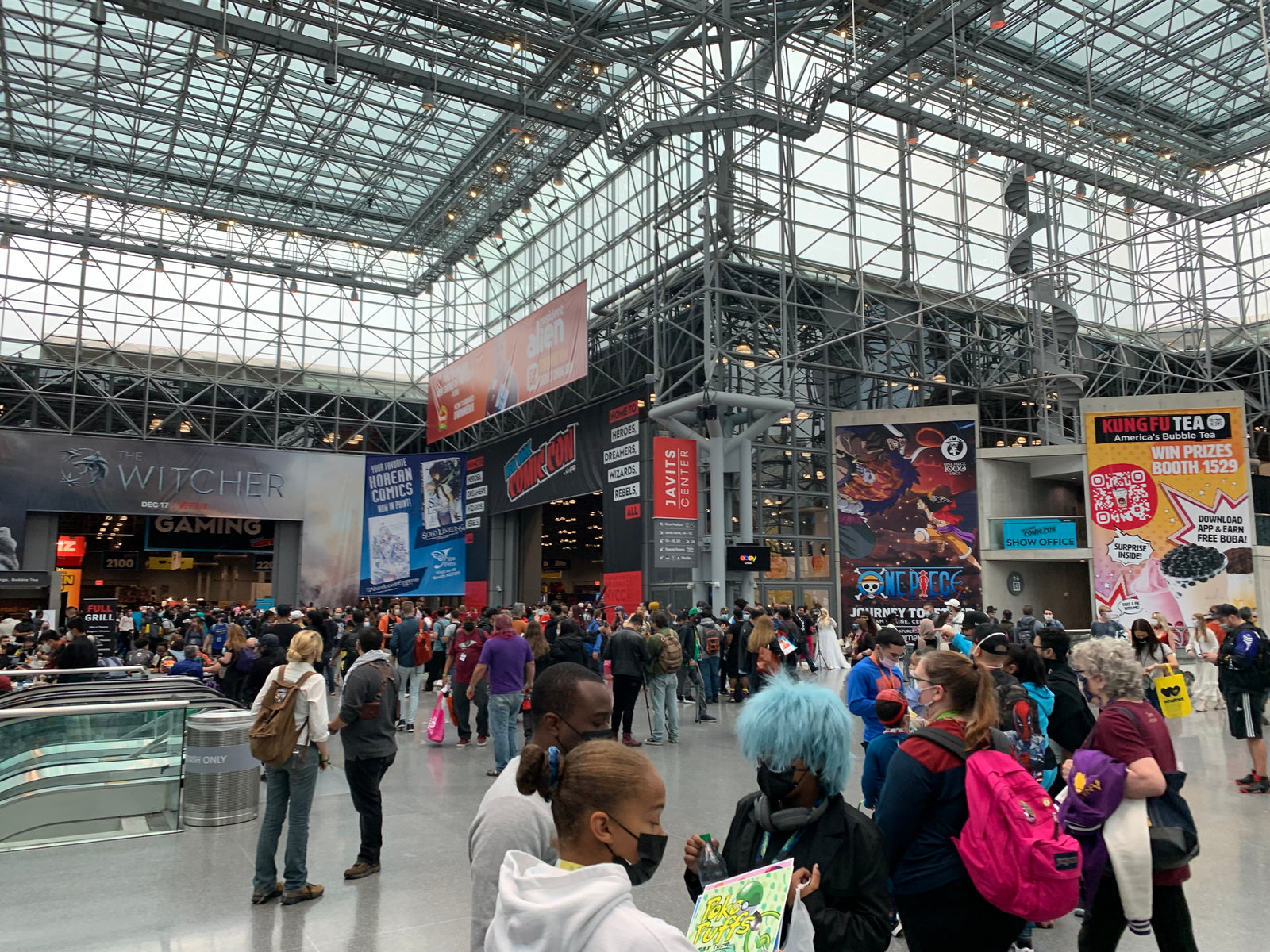Your Cart is Empty
Artists

Populated Yet Empty: New York Comic Con 2021
October 15, 2021 3 min read 0 Comments
I managed to go to one convention this year without getting sick, so I decided to tempt fate once more with a visit to the 2021 New York Comic Con. It seems I'm continuously drawn back to the Javits Center. The last time I went there was in April for my second Pfizer shot, and now I’m back for my usual con crawling. On Sunday, October 10, I headed out, curious to see who would turn up for NYCC, and to see just how much had been changed from the years past. As per city mandates, the convention required attendees be vaccinated and masked, so I wanted to see just how this would be enforced. Before you can enter the Javits Center you first have to go through a parking lot set up as a proof-of-vaccination station where you’re given a wristband once you confirm you’ve had your shots. From there you join up with the throngs of people heading into the Javits. One thing that definitely felt like the old NYCC was the absolute deluge of people. I thought “oh Sundays are usually slower at cons, and maybe there won't be so many people due to Covid concerns!” It is true that numbers were down, but the number of people attending was still considerable. According to Publisher’s Weekly, 150,000 people attended the New York Comic Con over the course of four days, with about 260,000 people attending in 2019. And while the Javits Center is enormous, it’s impossible to social distance when you’re packed with that many people.
High attendance numbers aside, there was a definite sense of absence. True, there were the usual T-shirt towers, Funko Pops, and colossal advertisements, but missing were a number of publishers. No Image Comics, Oni Press, DC, or Marvel. Not that they can be blamed, considering the circumstances, but I can’t help but wonder if some of the smaller publishers in attendance relished the chance to have that much less competition to deal with. Even major retailers like Midtown Comics were absent (though it was nice to see St. Mark's Comics advertising their new location in Brooklyn), and major retailers like Kinokuniya scaling back the size of their booths considerably. This could be a culmination of Covid related woes, shipping slowdowns, or possibly that certain exhibitors would be focusing on the upcoming Anime NYC in November. Speaking of anime, Japanese media had a considerable presence at NYCC. As soon as you enter the main exhibition hall you’re greeted by a colossal statue of Vegeta from Dragon Ball in his ape form, along with a massive booth promoting Shonen Jump proclaiming it as “The world’s most popular manga”, when it could probably just say most popular comics and still be true, and and on top of that an enormous booth dedicated solely to Demon Slayer merchandise. In many ways this felt like a dry-run of Anime NYC, or also a reflection of the sheer ubiquity of Japanese pop culture in the US over the decades. The show floor still had that familiar mix of consumerism and obsessive collecting that felt familiar to me. There was a considerable presence of vinyl collectibles and figures and while many of these were simply derivatives of Funko Pop, there were some sparks of creativity. I picked up a Insect Witch figure from Siva-Jack, AKA Superrobotking, done in a paint style evocative of Nausicaä of the Valley of the Wind.
Meanwhile, the Artists Alley was one of the parts that truly felt like old NYCC and has kept me from writing off the convention as a whole, with its mix of seasoned pros, newcomers, and all that is in between. Social distancing concerns aside, I was happy to see so many people pursuing the aisles with the actual artists behind comics rather than just the merchandise made from their works on the main show floor. I made my way picking up a few zines, stickers, and self published comics. This felt like the lifeblood of a comic convention (even if it was in a windowless basement). Still, there was definitely a gnawing sense of concern the whole time. If this is an indication of conventions to come, it certainly seems like there’s enough fans eager to attend these shows, and smaller publishers and artists able to fill slots, but will this be tenable in the long run?
Subscribe
Sign up to get the latest on sales, new releases and more …
